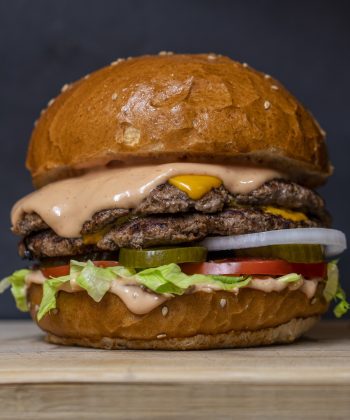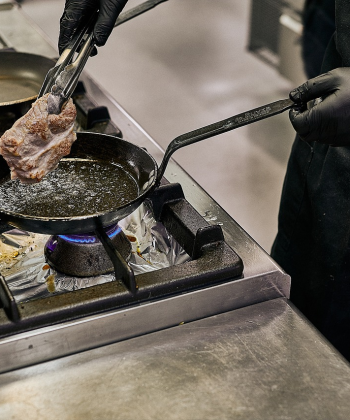In today’s fast-paced world, where convenience and speed are paramount, food packaging plays an indispensable role in ensuring that consumers receive safe, fresh, and high-quality products. Food packaging boxes, poly bags, and parchment paper are just a few examples of the various materials that make up the essential packaging process. Not only does packaging protect food during transportation and storage, but it also ensures that food remains safe for consumption, retains its freshness, and maintains its nutritional value.
This article delves into the importance of food packaging, emphasizing the role of packaging boxes, poly bags, and parchment paper in the broader context of food safety and freshness.
The Role of Food Packaging in Safety
Food safety is one of the top priorities for the food industry, as improper handling, storage, or packaging can lead to contamination and spoilage. Proper food packaging boxes, poly bags, and parchment paper help to mitigate these risks by providing several layers of protection. Here’s how:
Protecting Against Contamination
One of the most critical roles of food packaging is to prevent contamination. Without proper packaging, food is exposed to various potential hazards such as bacteria, dirt, and other environmental factors. Packaging materials, such as food packaging boxes, are designed to act as a barrier against these contaminants. For instance, when using food packaging boxes made of sturdy cardboard or other materials, food is shielded from external elements, ensuring it remains uncontaminated.
Poly bags are also essential for maintaining cleanliness. They offer an airtight seal, preventing any external contaminants from reaching the food inside. Additionally, parchment paper is often used to line food products, further ensuring that no harmful substances come into contact with the food.
Minimizing Cross-Contamination
In food production and packaging environments, preventing cross-contamination is a top concern. Poly bags and food packaging boxes can help separate different types of food, thereby minimizing the risk of allergens or pathogens transferring from one product to another. For example, when packaging ready-to-eat foods, the proper use of poly bags can prevent raw meat or seafood from contaminating fresh produce, ensuring the overall safety of the products.
Temperature Control
Food packaging boxes and poly bags also play a critical role in temperature control. Certain foods, especially perishable items such as meat, dairy, and produce, require specific temperature conditions to remain safe for consumption. Packaging materials like poly bags and insulated food boxes are designed to maintain a consistent internal temperature, helping to prevent spoilage and bacterial growth.
Food Packaging and Freshness Preservation
The quality and freshness of food products are major factors that influence consumer satisfaction. Effective packaging not only extends the shelf life of food but also preserves its taste, texture, and nutritional value. Here’s how food packaging boxes, poly bags, and parchment paper contribute to food freshness:
Sealing in Freshness
Food packaging boxes provide an airtight seal that prevents exposure to oxygen, which is one of the main culprits of food spoilage. For example, when packaging bakery items, vacuum-sealed food packaging boxes help to lock in freshness by reducing the amount of air inside the box. This results in products that stay fresh for longer periods, ensuring customers enjoy them at their best.
Poly bags also play a role in maintaining freshness. When foods such as bread, chips, or fresh vegetables are placed in poly bags, the bags keep moisture out and prevent exposure to air, which helps to maintain the food’s original taste and texture. This is particularly important in preventing products like chips or crackers from becoming stale and unappetizing.
Extended Shelf Life
Parchment paper, while primarily used for cooking and food preparation, can also be used as a packaging material to extend the shelf life of certain foods. For instance, wrapping meats or cheeses in parchment paper allows the food to breathe without losing moisture, which helps preserve the texture and flavor of the products. By preventing excessive moisture buildup, parchment paper can keep food fresh for longer.
Food packaging boxes are also specifically designed to extend the shelf life of perishable goods. Many food packaging boxes incorporate materials that protect against moisture, light, and temperature fluctuations, all of which can negatively affect food quality. With the right packaging, food items stay fresh, visually appealing, and nutritionally intact for longer periods.
Maintaining Nutritional Integrity
Maintaining the nutritional value of food is equally as important as ensuring its safety. Proper packaging ensures that food retains its nutritional profile, protecting vitamins and minerals from degradation caused by exposure to light, air, and temperature fluctuations. For example, the sealed environment created by poly bags or food packaging boxes can help preserve the integrity of vitamins like Vitamin C, which are highly sensitive to environmental factors.
The Environmental Impact of Food Packaging
While the importance of food packaging in ensuring safety and freshness cannot be overstated, it is equally crucial to consider the environmental impact of the materials used. With growing awareness about environmental sustainability, many food packaging manufacturers are moving toward more eco-friendly options. Packaging boxes made from recyclable cardboard or biodegradable materials are becoming increasingly popular in the food industry.
Poly bags and parchment paper, too, are available in eco-friendly versions. Biodegradable poly bags and unbleached parchment paper offer sustainable alternatives to traditional packaging materials. By choosing packaging options that reduce waste and support the environment, companies can contribute to a greener future while maintaining high standards of food safety and freshness.
Key Takeaways: Why Food Packaging Matters
In summary, food packaging plays a vital role in ensuring food safety, preserving freshness, and maintaining nutritional quality. Whether it’s food packaging boxes, poly bags, or parchment paper, each material serves a specific function that enhances the food’s overall quality and shelf life.
- Food Packaging Boxes: Provide protection against contamination and physical damage, while preserving food in an airtight environment to maintain freshness.
- Poly Bags: Offer a simple, cost-effective solution for sealing food products to prevent contamination and moisture exposure.
- Parchment Paper: Used for preserving the quality of baked goods, meats, and other products by ensuring proper ventilation and moisture control.
By investing in the right food packaging materials, food businesses can ensure that their products meet the highest safety standards while also delivering maximum freshness to consumers. As consumers continue to demand more sustainable and high-quality products, food packaging innovation will remain essential in shaping the future of the food industry.
At the end of the day, food packaging is not just about aesthetics or convenience; it’s about ensuring that consumers enjoy safe, fresh, and nutritious food with every purchase. As such, it is an investment in both the health of consumers and the success of food businesses.



